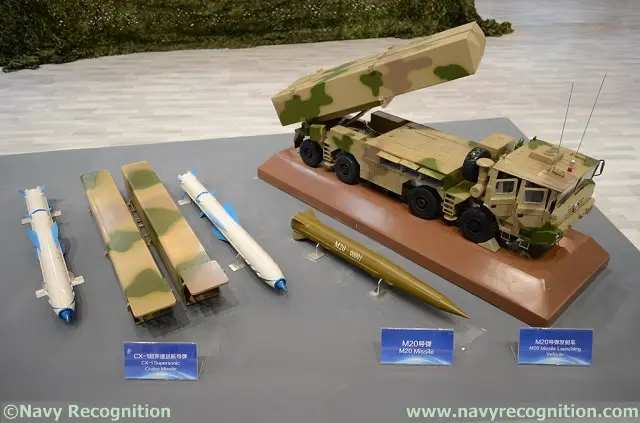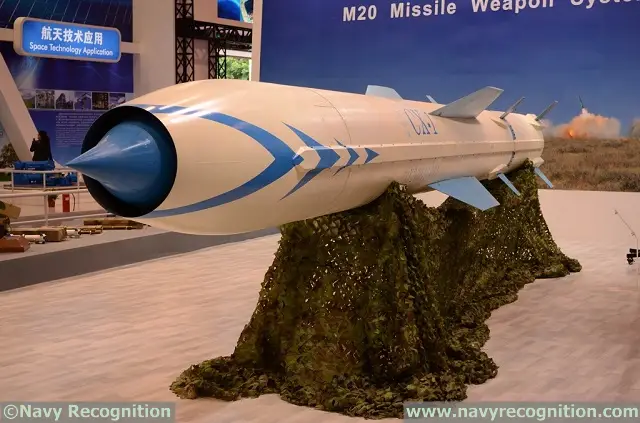Breaking news
Zhuhai Airshow: Chinese Company CASC unveiled the new CX-1 Supersonic Anti-Ship Cruise Missile.
| 2014
| |
|||
| a | |||
Naval
Defense Industry News - China |
|||
Zhuhai
Airshow: Chinese Company CASC unveiled the new CX-1 Supersonic Anti-Ship
Cruise Missile |
|||
At Zhuhai China Air Show 2014, (which is currently being covered by
our affiliate Army
Recognition) Chinese defense company China Aerospace Science
and Technology Corporation (CASC) unveiled the new CX-1 supersonic anti-ship
cruise missile (ASCM). Navy Recognition is able to shed some
light on this new supersonic missile that comes in two versions: The
CX-1B that can be truck launched from land and the CX-1A designed to
be surface launched from a vessel at sea. |
|||
 At Zuhai Air Show 2014, China Aerospace Science and Technology Corporation
(CASC) unveiled the new CX-1 supersonic anti-ship cruise missile (ASCM).
At Zuhai Air Show 2014, China Aerospace Science and Technology Corporation
(CASC) unveiled the new CX-1 supersonic anti-ship cruise missile (ASCM). |
|||
According
to CASC representatives at Zuhai Airshow 2014, the CX-1 supersonic cruise
missile system is mainly intended for attack against ships but also
has a secondary land attack capability. It can rapidly, precisely and
flexibly strike the enemy's maneuvering surface targets at sea and strategic/high
value targets on land (including semi-underground complexes). The version designated CX-1A is intended to be fitted on board surface vessels and launched from oblique/slanted container launchers. The CX-1B is the land based version launched from a 8x8 wheeled truck. The vehicle can carry two missiles. |
 The CX-1B is the land based version launched from a 8x8 wheeled truck.
The vehicle can carry two missiles.
The CX-1B is the land based version launched from a 8x8 wheeled truck.
The vehicle can carry two missiles. |
|||
The
CX-1 shares the same distinctive design feature as the famous Russo-Indian
Brahmos or Russian P-800 Oniks(Yakhont) cruise missiles: A large air intake
at the tip of the missile, with a cone sticking out. The wing arrangement
is different however: While Brahmos and Yakhont missiles are fitted with
two sets of wings, the CX-1 is fitted with three sets of wings including
one set on the booster. |
|||
 The CX-1 is a two stage supersonic anti-ship cruise missile with a range
of up to 280 km and a speed of up to Mach 3
The CX-1 is a two stage supersonic anti-ship cruise missile with a range
of up to 280 km and a speed of up to Mach 3 |
|||
|
|||
 CX-1 is fitted with stabilizer wings on its booster unlike Brahmos or
Yakhont missiles. The booster is fitted with four jet vanes (painted in
red).
CX-1 is fitted with stabilizer wings on its booster unlike Brahmos or
Yakhont missiles. The booster is fitted with four jet vanes (painted in
red). |
|||


























